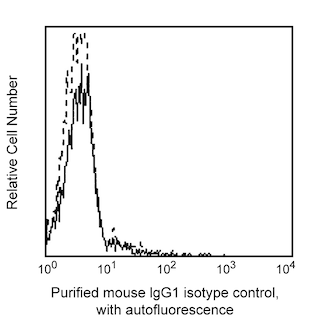-
Training
- Flow Cytometry Basic Training
-
Product-Based Training
- BD FACSDiscover™ S8 Cell Sorter Product Training
- Accuri C6 Plus Product-Based Training
- FACSAria Product Based Training
- FACSCanto Product-Based Training
- FACSLyric Product-Based Training
- FACSMelody Product-Based Training
- FACSymphony Product-Based Training
- HTS Product-Based Training
- LSRFortessa Product-Based Training
- Advanced Training
-
- BD FACSDiscover™ S8 Cell Sorter Product Training
- Accuri C6 Plus Product-Based Training
- FACSAria Product Based Training
- FACSCanto Product-Based Training
- FACSLyric Product-Based Training
- FACSMelody Product-Based Training
- FACSymphony Product-Based Training
- HTS Product-Based Training
- LSRFortessa Product-Based Training
- United States (English)
-
Change country/language
Old Browser
This page has been recently translated and is available in French now.
Looks like you're visiting us from {countryName}.
Would you like to stay on the current country site or be switched to your country?




Two-parameter flow cytometric analysis of CD155 (PVR) expression on human peripheral blood leucocytes. Human peripheral blood was stained with either Purified Mouse IgG1, κ Isotype Control (Cat. No. 554121) or Purified Mouse Anti-Human CD155 (PVR) antibody (Cat. No. 566721) at 1 μg/test. The cells were washed and stained with PE Goat Anti-Mouse Ig (Multiple Adsorption) (Cat. No. 550589). Erythrocytes were lysed with BD Pharm Lyse™ Lysing Buffer (Cat. No. 555899). Two-parameter flow-cytometric dot plots showing the correlated expression of CD155 (PVR) [or Ig Isotype control staining] versus side light scatter (SSC) signals were derived from gated events with the forward and side light-scatter characteristics of viable leucocyte populations. Flow cytometry and data analysis were performed using a BD LSRFortessa™ X-20 Cell Analyzer System and FlowJo™ software. Data shown on this Technical Data Sheet are not lot specific.


BD Pharmingen™ Purified Mouse Anti-Human PVR (CD155)

Regulatory Status Legend
Any use of products other than the permitted use without the express written authorization of Becton, Dickinson and Company is strictly prohibited.
Preparation And Storage
Product Notices
- Since applications vary, each investigator should titrate the reagent to obtain optimal results.
- An isotype control should be used at the same concentration as the antibody of interest.
- Caution: Sodium azide yields highly toxic hydrazoic acid under acidic conditions. Dilute azide compounds in running water before discarding to avoid accumulation of potentially explosive deposits in plumbing.
- Sodium azide is a reversible inhibitor of oxidative metabolism; therefore, antibody preparations containing this preservative agent must not be used in cell cultures nor injected into animals. Sodium azide may be removed by washing stained cells or plate-bound antibody or dialyzing soluble antibody in sodium azide-free buffer. Since endotoxin may also affect the results of functional studies, we recommend the NA/LE (No Azide/Low Endotoxin) antibody format, if available, for in vitro and in vivo use.
- Please refer to www.bdbiosciences.com/us/s/resources for technical protocols.
Companion Products





.png?imwidth=320)
The SKII.4 monoclonal antibody specifically binds to the Poliovirus Receptor (PVR) which is also known as CD155, or Nectin-like protein 5 (NECL5). PVR is a ~70 kDa nectin-like type I transmembrane glycoprotein that belongs to the PVR-related (PRR) family within the Ig superfamily. In addition to two cell surface PVR isoforms (alpha and delta), two secreted PVR isoforms (beta and gamma) have been reported that share the same three Ig domains but differ in their C-termini. PVR is expressed on monocytes, macrophages, endothelial cells, epithelia cells, CD34+ thymocytes, and neurons. In addition to serving as a receptor for poliovirus and cytomegalovirus, PVR functions as an adhesion molecule involved in cell-cell and cell-matrix adhesion through interaction with CD96 (TACTILE), Nectin 1-3 (CD111, CD112, CD113), CD226, and vitronectin. PVR promotes natural killer (NK) cell adhesion to and lysis of target cells.
Development References (4)
-
Freistadt MS, Eberle KE. CD155 (poliovirus receptor) Workshop Panel Report. In: Knapp W. W. Knapp .. et al., ed. Leucocyte typing IV : white cell differentiation antigens. Oxford New York: Oxford University Press; 1989:1075-1078.
-
Freistadt MS, Fleit HB, Wimmer E. Poliovirus receptor on human blood cells: a possible extraneural site of poliovirus replication.. Virology. 1993; 195(2):798-803. (Biology). View Reference
-
Fuchs A, Cella M, Giurisato E, Shaw AS, Colonna M. Cutting edge: CD96 (tactile) promotes NK cell-target cell adhesion by interacting with the poliovirus receptor (CD155).. J Immunol. 2004; 172(7):3994-8. (Immunogen: Flow cytometry, Immunofluorescence). View Reference
-
Pende D, Bottino C, Castriconi R, et al. PVR (CD155) and Nectin-2 (CD112) as ligands of the human DNAM-1 (CD226) activating receptor: involvement in tumor cell lysis.. Mol Immunol. 2005; 42(4):463-9. (Biology). View Reference
Please refer to Support Documents for Quality Certificates
Global - Refer to manufacturer's instructions for use and related User Manuals and Technical data sheets before using this products as described
Comparisons, where applicable, are made against older BD Technology, manual methods or are general performance claims. Comparisons are not made against non-BD technologies, unless otherwise noted.
For Research Use Only. Not for use in diagnostic or therapeutic procedures.
Report a Site Issue
This form is intended to help us improve our website experience. For other support, please visit our Contact Us page.